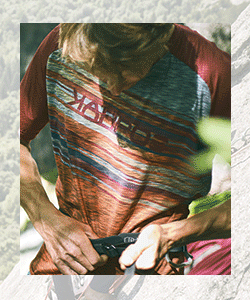Circular Economy: Recycled and Recyclable Climbing Holds

The acceleration of indoor climbing practice and the boom in climbing facilities over the past five years have raised issues related to product collection and recycling, which are in line with the current environmental concerns. So, what should be done with used climbing holds? As La Fabrique verticale recently explained, the production of climbing holds is gradually moving toward the circular economy. Let’s focus on the initiatives being undertaken.
It’s evident that, following the Anti-Waste Law for a Circular Economy (AGEC), numerous initiatives have emerged in the climbing industry. Climbing holds, which used to end up as waste, are now destined for a second life. Furthermore, there is an increasing effort to produce them in a more environmentally friendly manner. Great news!
Ecological Transition and Circular Economy: How AGEC Changed the Game
Promulgated on February 10, 2020, and effective from January 2022, this law aims to transform current production and consumption methods to make them more environmentally friendly. It is divided into five main axes:
- Eliminate disposable plastics.
- Provide better information to consumers.
- Combat waste and promote solidarity-based reuse.
- Act against planned obsolescence.
- Produce more responsibly.
This law affects all areas of activity, including sports equipment producers, importers, and distributors, including climbing hold manufacturers and large climbing gym networks. Companies are required, either individually or by collectively financing a dedicated eco-organization (Ecologic), to organize the collection, sorting, and treatment of the products they bring to the market and the waste they generate. While this is a significant step forward, it also presents some challenges.

How Do Climbing Hold Brands Respond to AGEC?
Initially, this law was seen as burdensome by industry players, as it directly impacts their finances. They are now obliged to pay an eco-contribution, and this comes at a challenging time with the aftermath of the COVID-19 pandemic, supply chain difficulties, and the ongoing energy crisis.
However, in the end, it has also been a fantastic opportunity for the climbing industry to rethink its manufacturing processes with a more environmentally friendly approach, including recycling and eco-responsible production. Various projects have emerged as a result, some of which La Fabrique verticale will delve into more deeply in the near future, but we provide an initial overview here.
In practice, France is one of the first countries to organize this collection process, albeit somewhat rapidly. Brice Anziutti, the head of one of the leading French climbing hold brands, sees it as a “competitive advantage” in the long run compared to other manufacturers, especially the Bulgarian supplier Composite-X. This leader in subcontracting for the European market for PU climbing hold production (used by brands like Cheeta, Flatholds, HRT, Kilter, etc.) holds about 60% of the market.

However, Composite-X mass-produces in conditions that, according to some market players, do not always comply with labor laws, especially when it comes to worker protection, considering the toxicity of emissions during hold casting. This is a point contested by the manufacturer Composite-X, who, when contacted by us, explained this to us : “In terms of working conditions, we have some of the safest in the industry.
One of Composite X’s main advantages is that we make the Dannomond system in house. This means we tailor make the prepolymer to be user friendly. The process itself – we use only a prepolymer system which drastictly lowers the free Isocyanate content of the Dannomond. On top of this we cure all our products in Autoclaves and not in the open air – unlike almost all other PU / PE producers. This makes a much safer working environment by design”
Circular Economy: Towards More Eco-Responsible Production of Climbing Holds
La Fabrique verticale has been impressed by the number of initiatives currently emerging for more eco-responsible climbing hold production, following the principles of the circular economy. For example, there is the creation of holds made from natural and recycled materials. Mention should be made of Ino’holds, a new French brand that incorporates hemp fibers and 11% recycled materials into its Greenmix.

Similarly, the British company Darwin Composites incorporates cornstarch into their holds, Bioholds, and strengthens them with flax fibers. Tom Lee, an engineer by training, established his company in Shrewsbury, working in various fields, including motorsports, water sports, and agriculture.
Recyclable Holds
Even more exciting is the production of recyclable holds that can be recycled more than a hundred times without losing their properties. This is what the French startup Ghold and the company Greenholds, recently awarded at ISPO, offer. The brilliant idea of these chemists, separately developed, was to create a new raw material (thermoplastic) and a completely different production method (injection molding).
As Tim Mullens from Greenholds explains, “We use polyamide from industrial waste streams (such as nylon). We don’t need to extract new oil to make our holds. It’s a ‘single-material’ product. We can recycle it 100% at the end of its life cycle. We shred it, melt it, and produce new climbing holds.” This eliminates the use of PU, which is thermosetting and therefore not recyclable. Progress is being made!
The only drawback is the high cost of steel molds, which limits the possibility of producing a wide range of holds. Thus, holds may be limited to basic shapes for public facilities or for equipping training areas (e.g., Güllich board holds). Nonetheless, this is a significant step towards reducing the use of PU.

Ghold: The Future of Recycled Holds
Ghold shares the same philosophy. The startup has filed both national and international patents to protect its innovation and new production methods. The goal is to become a major player in subcontracting for the production of recycled holds in the European market. They try to work with as many brands as possible. Ghold has the capability to mold and produce existing hold ranges. Especially for medium-sized holds (up to M or even L). A promising start.
In the long run, the idea is to sell fully recycled and recyclable holds to large gym chains, equipped with QR codes. Route setters could return them to Ghold for a revamp and acquire different shapes. “The business model could be rental, to make life easier for gyms,” as Sébastien Leprivey, one of the founders of Ghold, explains. “Our innovation allows us to produce recyclable holds with the same durability, texture, and quality as the holds currently found in gyms.” This circular economy model is possible because Ghold manages recovery and recycling internally.

Circular Economy Serving Climbing
In concrete terms, gyms would rent material from Ghold. At the end of their life cycle, the holds would be returned, ground up. And the material reused. They would thus become recycled holds with different shapes. And this cycle could repeat almost indefinitely. Clever! Sébastien Leprivey adds, “We are launching industrial production and producing holds for several French brands. Including Artline. Additionally, we are in discussions with many European brands. We are concluding a €2 million fundraising campaign to establish a production site in France.”
One particularly interesting aspect of this project is that manufacturing is entirely based in France and environmentally and worker-friendly. Long live the circular economy!










